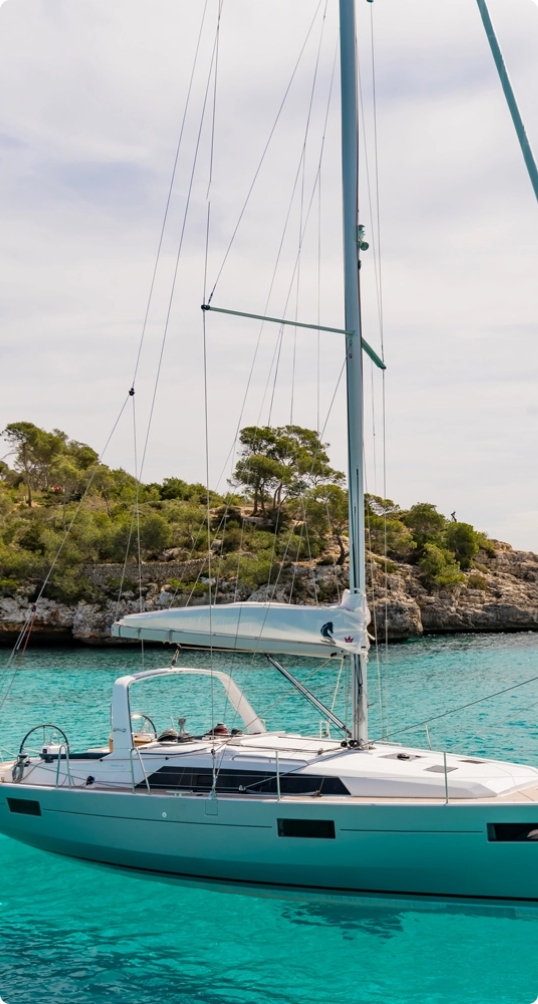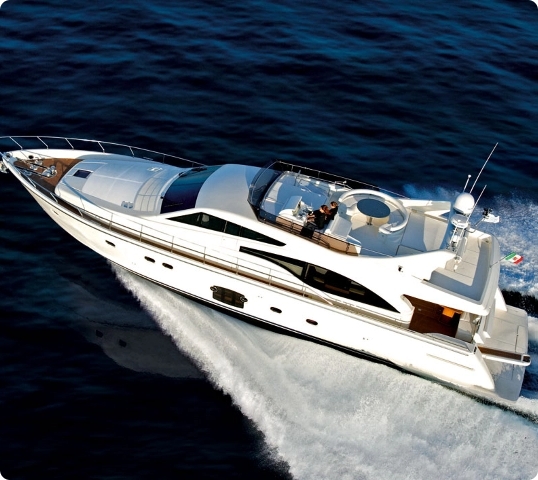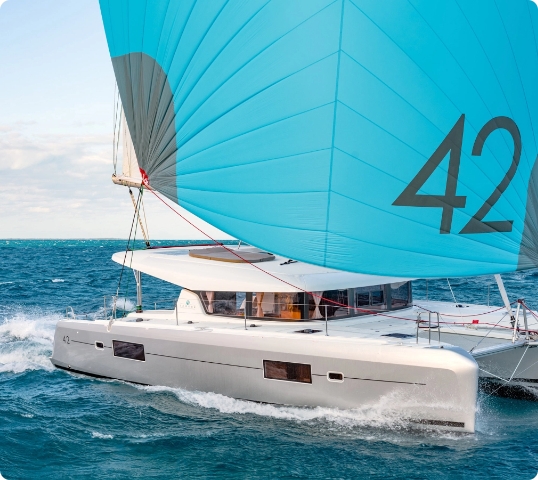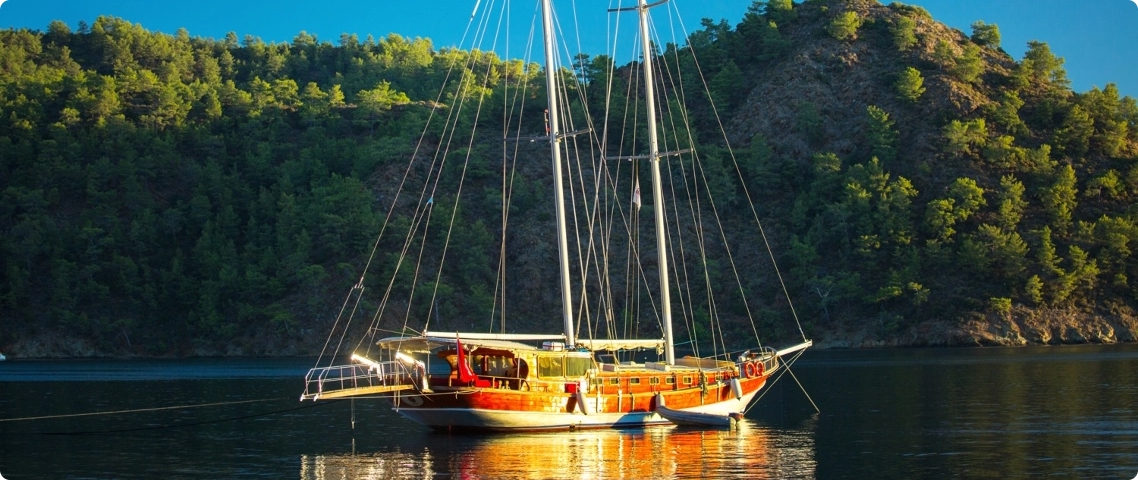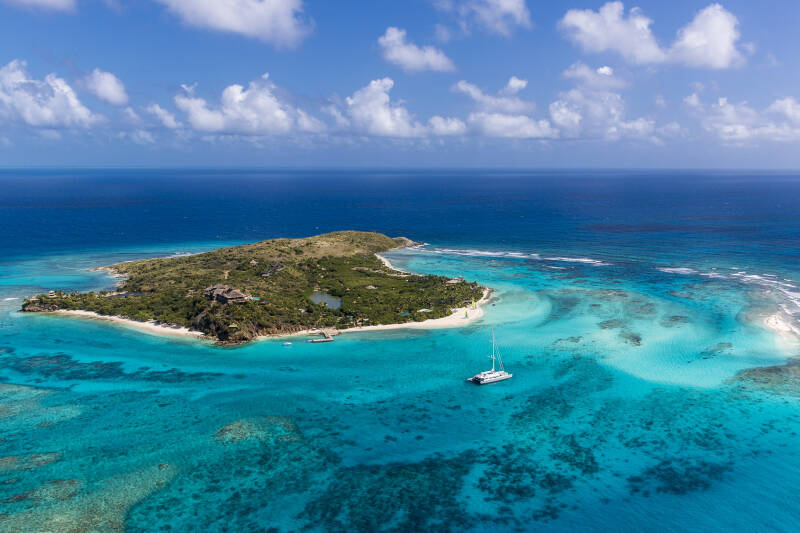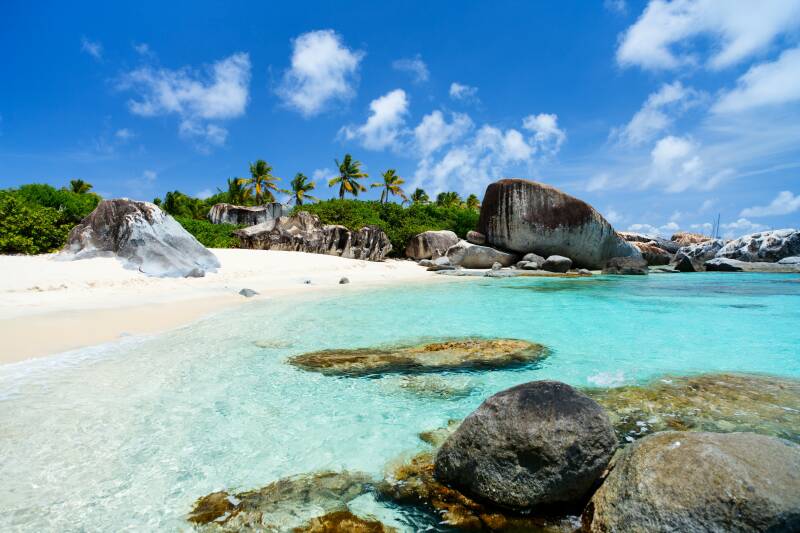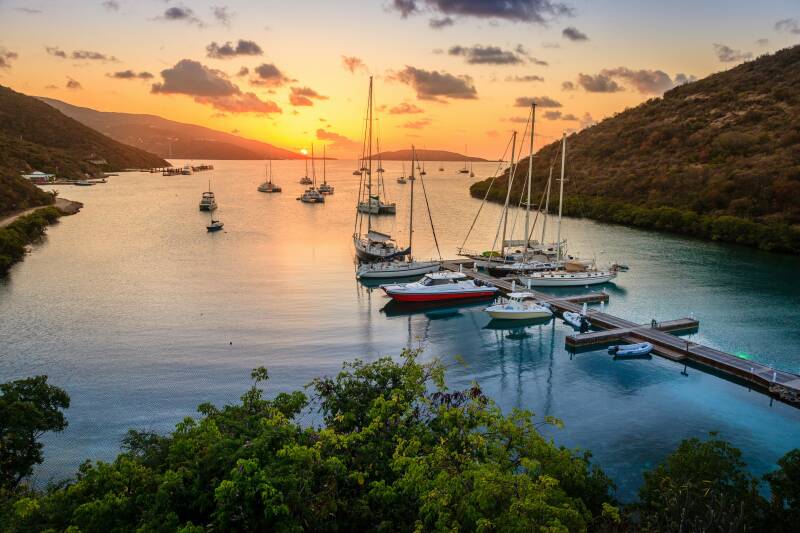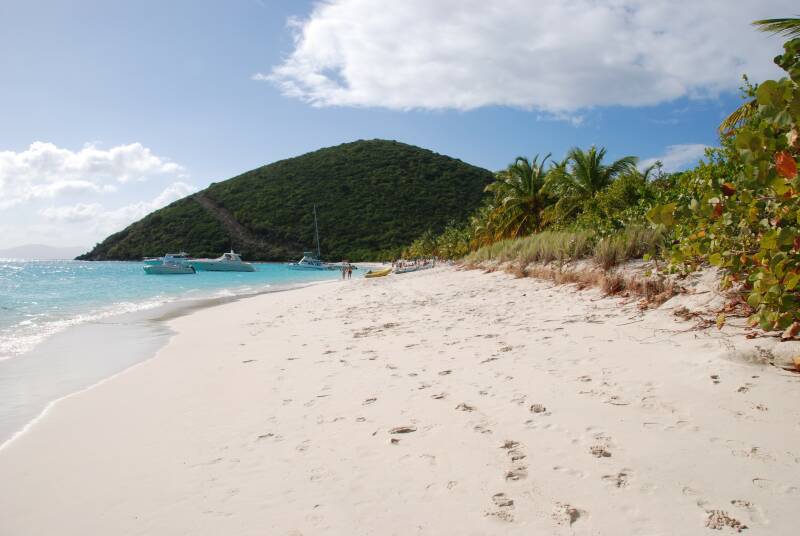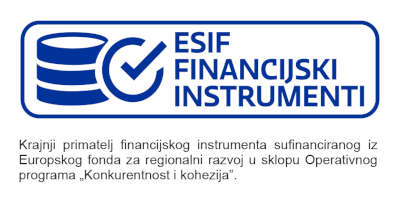Why Go Sailing in British Virgin Islands?
Charter a yacht in the British Virgin Islands, known as a "sailor's paradise", an untouched volcanic archipelago adorned with underwater coral reefs and beautiful white sandy beaches ideal for daily swims and sunbathing. Sailing in the British Virgin Islands will spoil all your senses. Nature lovers will be able to enjoy BVI’S rich tropical vegetation: white cedar, mangoes, coconuts, cactus, acacia, and bananas. Gourmands can join in, too, but they might put their focus on fresh fish.
Sailing is a favourite sport in this unique hybrid of European, African, and Caribbean cultures. This mixture of cultures led to the annual BVI Spring Regatta and Sailing Festival, a five-day sailing race and celebration. Along with sailing the British Virgin Islands, there are many other recreational activities to fill your days with, such as snorkelling, windsurfing, fishing, hiking on the low mountains, and spas. Various types of sailing yachts and catamarans are waiting for you in the British Virgin Islands to take you on an unforgettable island-hopping adventure.
Choose Your Perfect Boat in the British Virgin Islands
Sailing Conditions in the British Virgin Islands
The British Virgin Island’s climate is tropical and humid. Temperatures are constant and pleasantly warm as the sun shines throughout the whole year which means you can opt for a British Virgin Islands yacht charter all year round. The average temperatures are 29° C in summer and 25° C in winter, but it can be significantly colder in the evenings from December to April when the trade winds are at their coolest. The British Virgin Island’s weather and warm trade winds offer excellent sailing conditions, ideal for sailing beginners.
Thanks to this, it is simple to plan a BVI sailing route. Trade winds are consistent throughout the year, blowing from 10 to 20 knots. Those warm and moderate winds make sailing in the British Virgin Islands a dream. Also, they almost constantly blow from the East.
During the Virgin Island’s winter months (November to February) the wind blows from 15 to 20 knots. In December, the Christmas Winds can produce 25 to 30 knots for several days in a row. In spring/summer months, the winds tend to be lighter, blowing at around 10-15 knots. In September and October, the trade winds are at their weakest.
Tropical storms and hurricanes can occur in the region in the second half of the year (June – October) but mainly in August and September. However, you can still charter a yacht in the British Virgin Islands during the hurricane season – the BVI can go for years without a storm.
The best time to sail BVI would be from December through April. In May and June, the islands get less busy and more peaceful. During September and October, there is a small chance of hurricanes. However, it is also the best time for sailing British Virgin Islands if you want to be alone and have a whole beach to yourself.
The rainiest months in British Virgin Islands are May and September-November. Don’t be worried, when the rain does come it’s usually brief, heavy bursts which last less than an hour. The driest months are usually February to April. Sea temperature is warm and pleasant throughout the year in the BVI and it sits around late 26-28 °C.
Important Info for sailing in the British Virgin Islands

Best Time to Sail
December - April

Weather/Climate
Tropical

Sailing License
Not required, only adequate sailing resume (experience is recommended)

Currency
US Dollar (USD)

Spoken Language
English, Virgin Islands Creole

Top Attractions
NP The Baths, NP Gorda Peak, Anegada Island, Strand White Bay - Jost Van Dyke, beaches Cane Garden Bay & Smuggler's Cove - Tortola, Rhone National Maritime Park, Sandy Cay, Norman Island, Road Town
Top Reasons to Visit the British Virgin Islands
When you charter a yacht in the BVI, you will find out that there are around 60 British Virgin Islands and islets, many of which are uninhabited. Sailing a catamaran in the BVI is a perfect way to explore less accessible islands, but also to enjoy traveling between tourist hotspots.
The largest and most populated British Virgin Island, Tortola, attracts most tourists. There, you will find yourself surrounded by lush vegetation and rich marine life while you indulge into many water activities available all around the island. The best white sandy beaches are found on the northern part of the island: Smuggler’s Cove, Long Bay, Cane Garden Bay, to name a few. When you decide to go sightseeing, your eyes will feast on the mix of historic sites, private villas, and luxury resorts. Visit Fort Burt, Mount Healthy Windmill, Callwood’s Rum Distillery, and J.R. O’Neal Botanic Gardens.
Jost Van Dyke is the smallest of the four main British Virgin Islands, but as equally enchanting as all of them due to its rugged volcanic wilderness. The Great Harbor is lined with small bars and restaurants where you can enjoy grilled fresh fish, lobster, or the Painkiller (a rum cocktail that reputedly originated from here). This is also the place that becomes a crowded yacht party during Halloween and New Year’s Eve.
Scrub Island offers villas, spas, restaurants, marina, and private beaches for a completely tranquil holiday time. Spend your time following the nature trails and find yourself a protected cove for a private retreat time. Have a steak or lobster with a glass of a refreshing drink and take in a panoramic view over the open sea. Turn up for a beach party, relax around the fire pit and gaze into a starry sky.
Anegada is the only coral island within the volcanic archipelago, also known as Drowned Island, considering the highest point is 28 ft over the sea level.
Virgin Gorda island doesn’t lack the natural beauty, it has a National Park with one of the last remaining examples of the Caribbean dry forest. Virgin Gorda is also home of the world-famous Baths, and the trail from there will lead you to the Devil’s Bay. The area is a part of another national park on this island. Mooring buoys and a dinghy dock allow boaters to access the beach known for its massive granite boulders.





